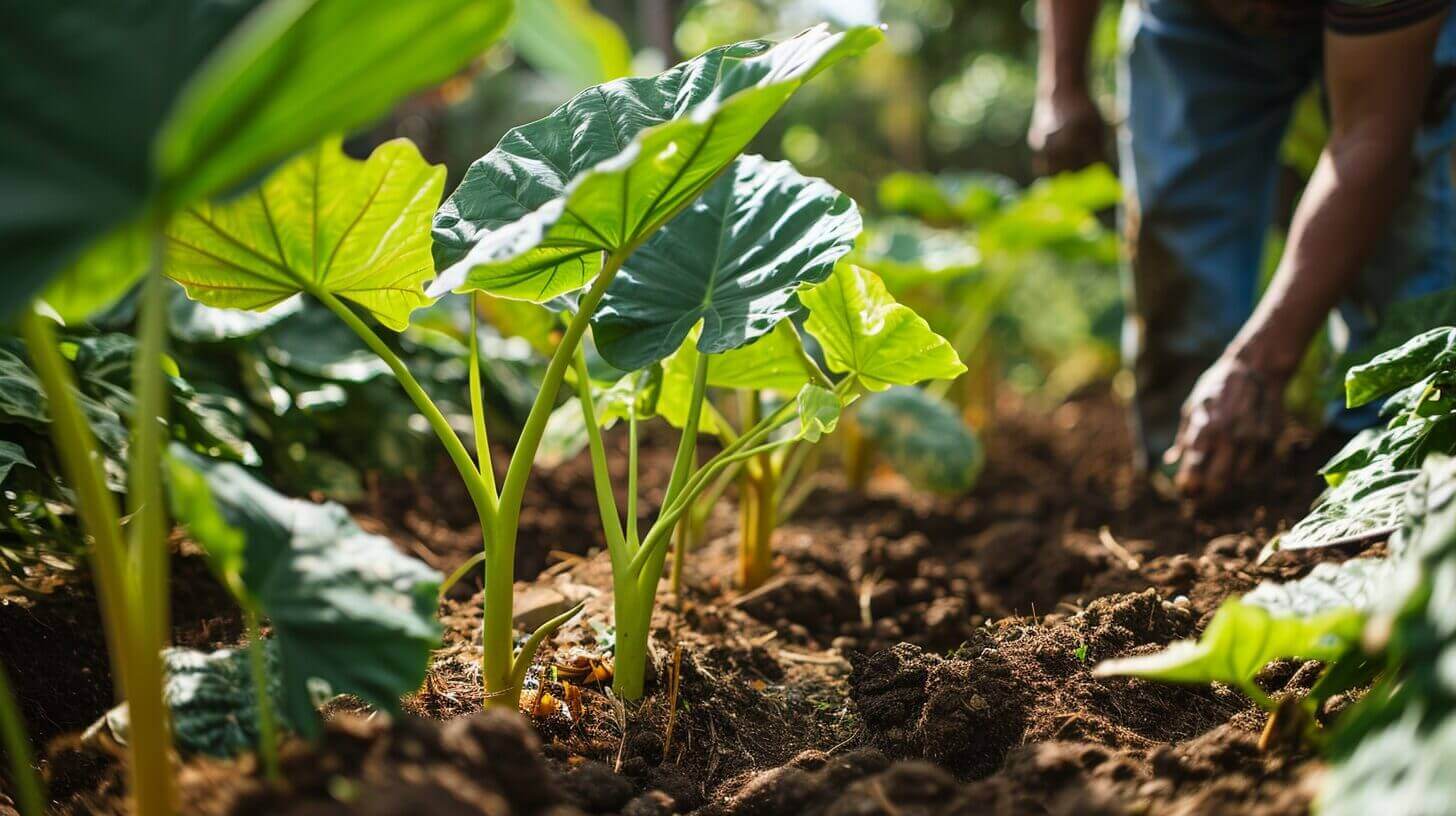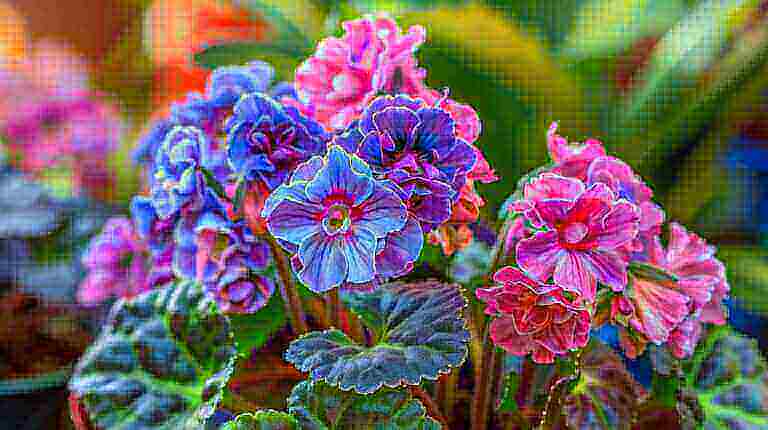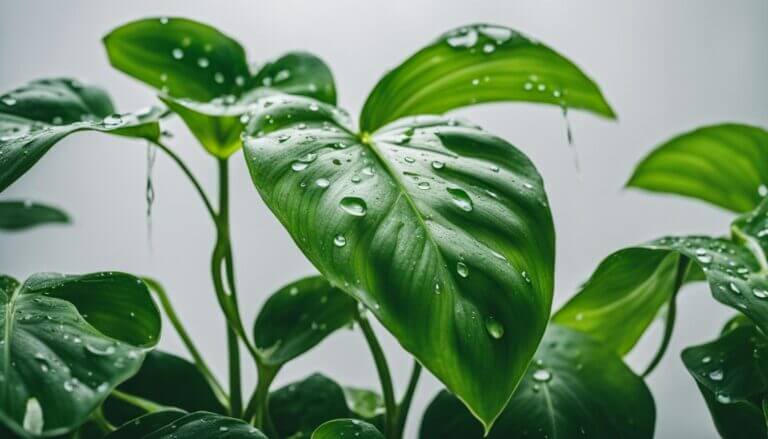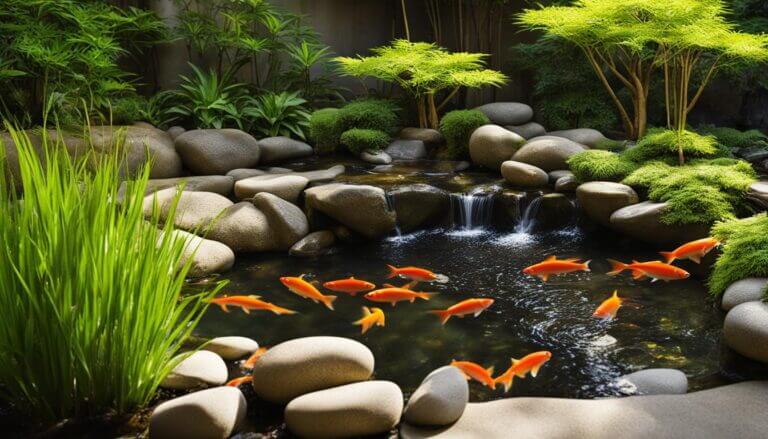How to Plant Elephant Ear Bulbs in Pots: Soil Depth and Care Tips
If you’re looking to add a touch of tropical plants to your garden, planting elephant ear bulbs indoors in pots is a great option. These stunning plants, also known as Colocasia or Alocasia, feature large, dramatic leaves that can create a bold statement in any outdoor space. In this guide, I will walk you through the steps to successfully plant indoors and care for elephant ear bulbs in pots.
Before you get started, it’s important to note that elephant ear bulbs can be grown as perennials in zones 9 to 11 and as annuals in zones 3 to 8. Now, let’s dive into the specifics!
Key Takeaways:
- Choose a location with partial shade or filtered sunlight for planting elephant ear bulbs.
- Plant the bulbs at a depth of 5 inches (13 cm) in rich, well-draining soil.
- Keep the soil around the bulbs moist and use liquid fertilizer every three to four weeks.
- In colder regions, dig up the bulbs and store them in a cool, dark place during the winter.
- Handle elephant ear bulbs with gloves and keep them away from children and pets.
How to Plant Elephant Ear Bulbs in Containers
If you’re looking to add a touch of exotic beauty to your garden or indoor space, planting elephant ear bulbs in containers is a great option. Not only do these plants make a stunning statement with their large, vibrant leaves, but they are also relatively easy to care for. Here’s a step-by-step guide on how to plant elephant ear bulbs in containers.
Container Size and Type
Choose a container that is at least 16 inches deep and 18 inches wide to allow enough space for the growth of the elephant ear plant. Opt for a non-porous container made of plastic, fiberglass, or glazed clay to retain moisture. A larger container will provide better stability for the plant and allow the roots to spread out.
Potting Mix and Bulb Placement
Fill the container with a lightweight commercial potting mix that provides good drainage. This will help prevent waterlogging and root rot. You can also prepare the soil by adding organic compost or manure on top of the soil for added nutrition and moisture retention. Bury the elephant ear bulb root-side down about 8 inches deep in the soil, ensuring that the top of the bulb is just below an inch of soil surface. This will allow the plant to establish its roots while still being able to sprout through the soil.
Watering and Care
Water the plant regularly to keep the soil moist but not overly saturated. Elephant ear plants thrive in moist conditions, so it’s essential to monitor the moisture levels and adjust watering accordingly. Be sure to avoid overwatering, as this can lead to root rot. Additionally, provide the plant with partial shade or filtered sunlight to prevent the leaves from getting scorched by the sun. Applying a layer of mulch around the plant can help conserve moisture and regulate soil temperature.
With proper care and maintenance, your elephant ear plant will flourish in its container, adding a tropical touch to your garden or living space. Enjoy the beauty and unique foliage that these plants bring, and follow the care tips mentioned above to ensure their optimal growth and longevity.
| Container Size | Potting Mix | Bulb Placement | Watering and Care |
|---|---|---|---|
| At least 16 inches deep and 18 inches wide | Lightweight commercial potting mix with good drainage | Bury the bulb root-side down about 8 inches deep in the soil | Keep the soil moist but not overly saturated; provide partial shade or filtered sunlight |
Care Tips for Elephant Ear Bulbs
When caring for elephant ear bulbs, it’s important to keep a few tips in mind to ensure their health and longevity. Here are some essential care tips to help you maintain your elephant ear plants:
First and foremost, it’s crucial to note that elephant ear bulbs are toxic if ingested. Therefore, always wear gloves when handling them and keep them out of reach of children and pets to prevent any accidents.
Regular pruning is necessary to keep your plants looking their best. Remove any dead or yellowing foliage to promote healthy growth and prevent the spread of diseases. Pruning also helps maintain the plant’s shape and overall appearance.
During the fall, elephant ear plants go into a dormant period. This is when you should reduce watering and stop feeding the plants for 8-10 weeks. Allowing the plant to rest during this time helps it prepare for the following growing season.
If you have potted elephant ear plants outdoors, it’s essential to bring them inside before the first frost to protect them from freezing temperatures. This will help prevent the bulbs from getting damaged and ensure their survival through the winter.
Note: If relevant and suitable, insert a brief introductory passage prior to using an h3 heading.
FAQ
What are the ideal planting conditions for elephant ear bulbs?
Elephant ear bulbs should be planted in spring to early summer when the soil temperature reaches 65ºF (18ºC). Choose a location with partial shade or filtered sunlight to prevent leaf scorching. Plant the bulbs at a depth of 5 inches (13 cm) in rich, well-draining moist soil.
How should I plant elephant ear bulbs in pots?
For planting in pots, use a container that is at least 16 inches deep and 18 inches wide. Use a non-porous container made of plastic, fiberglass, or glazed clay to retain moisture. Fill the pot with a lightweight commercial potting mix that provides good drainage. Bury the elephant ear bulb root-side down about 8 inches deep in the soil.
Are elephant ear bulbs toxic?
Yes, elephant ear bulbs are toxic if ingested. It is important to wear gloves when handling them and keep them away from children and pets.
What care tips should I follow for elephant ear bulbs?
Prune off dead foliage and stop watering the plant for 8-10 weeks during the fall when it goes dormant. Bring outdoor potted elephant ears inside before the first frost to protect them from freezing temperatures. Water the plants 1-2 times a month during the dormant period to keep the soil moist. Resume regular watering and feeding with a balanced fertilizer in the spring.
How do I prevent deer from grazing on my elephant ear plants?
Elephant ear plants are known to be deer-resistant. However, if you have deer in your area, you can take precautions such as using deer repellents or installing fencing to protect your plants.







